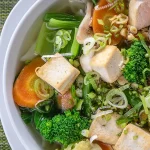Introducing Cambodia’s Traditional Dishes
Discover the best food in Cambodia with our practical guide to the most authentic dishes, snacks, and desserts. Whether you’re a first-time visitor or a returning fan, this food list highlights the unique flavors and culinary experiences that make Cambodian cuisine special. From legendary Amok Trey to addictive street snacks, use our checklist to taste your way through the best food Cambodia has to offer.
For readers interested in a deeper exploration of the history, cooking methods, spices, or cultural influences that shape the country’s cuisine, we have a separate, detailed Culinary Guide to Cambodia available on our website. You might also find this Wikipedia article on Cambodian cuisine helpful for more background.
For the true gastro-tourism fans, we have also prepared a useful, interactive PDF checklist, which you can download at the end of this article. Its purpose is to help you track your culinary experiments and record your personal impressions of each dish you try in Cambodia.
Table of Contents
Best Food in Cambodia: Main Dishes
Amok Trey (Steamed Fish Curry)
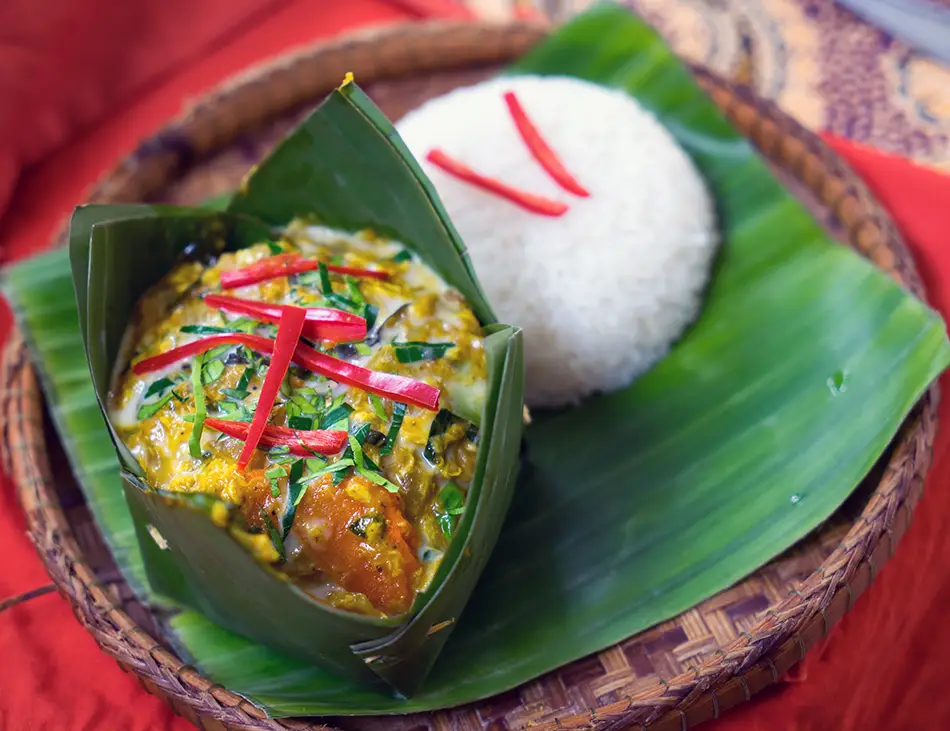
This dish is a hallmark of Cambodian cuisine. It consists of freshwater fish fillets steamed in a savory coconut milk-based curry. The curry is thickened with egg and seasoned with kroeung, a distinctive lemongrass and spice paste. Traditionally, the mixture is placed in a cup made from banana leaves and steamed until it achieves a firm, mousse-like consistency. It is typically served with rice.
Bai Sach Chrouk (Grilled Pork With Rice)

A common breakfast dish, Bai Sach Chrouk translates to “pork and rice.” It features thinly sliced pork marinated in coconut milk or garlic and grilled over charcoal until lightly caramelized. The grilled pork is served over a portion of steamed rice, often accompanied by pickled cucumber and daikon radish, and a small bowl of chicken broth.
Lok Lak (Stir-Fried Beef Cubes)
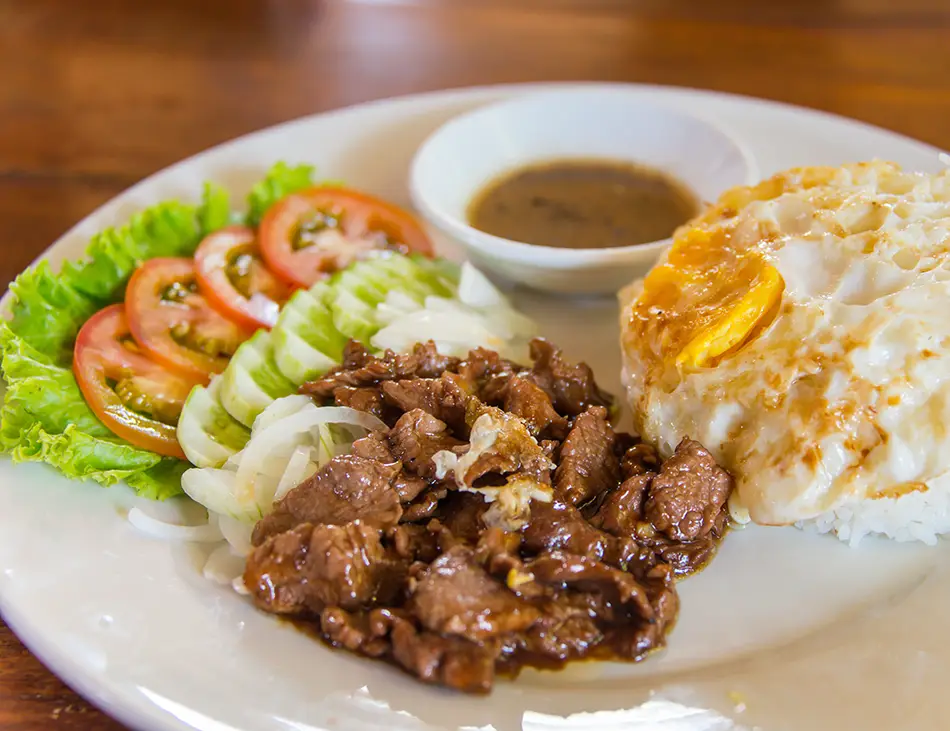
Lok Lak is a stir-fried dish made with cubes of beef, typically marinated in a mixture of soy sauce, oyster sauce, and sugar. It is cooked quickly over high heat and served on a bed of fresh lettuce, tomatoes, and raw onions. A fried egg is often placed on top. A characteristic dipping sauce made from lime juice and black pepper accompanies the dish.
Kdam Chaa (Stir-Fried Crab)
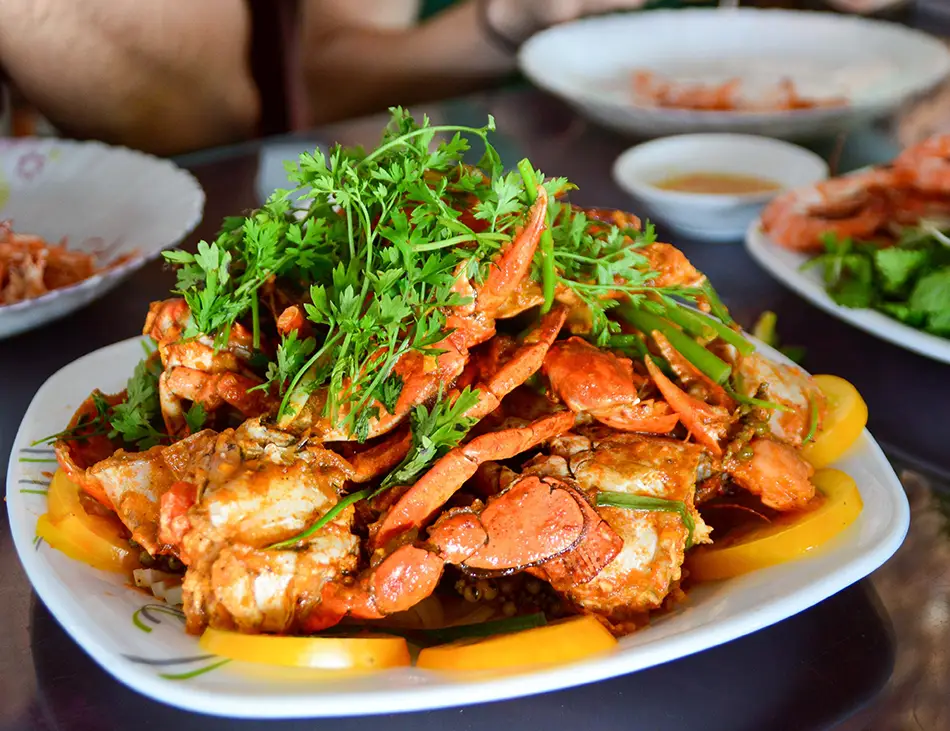
This dish highlights the country’s fresh seafood, particularly crab. Kdam Chaa is a stir-fry of whole or chopped crab. A well-known version from the coastal region of Kampot features green peppercorns, which are famous in that area. The sauce is typically savory and slightly sweet, complementing the crab meat.
Chaa Kroeung (Lemongrass Stir-Fry)
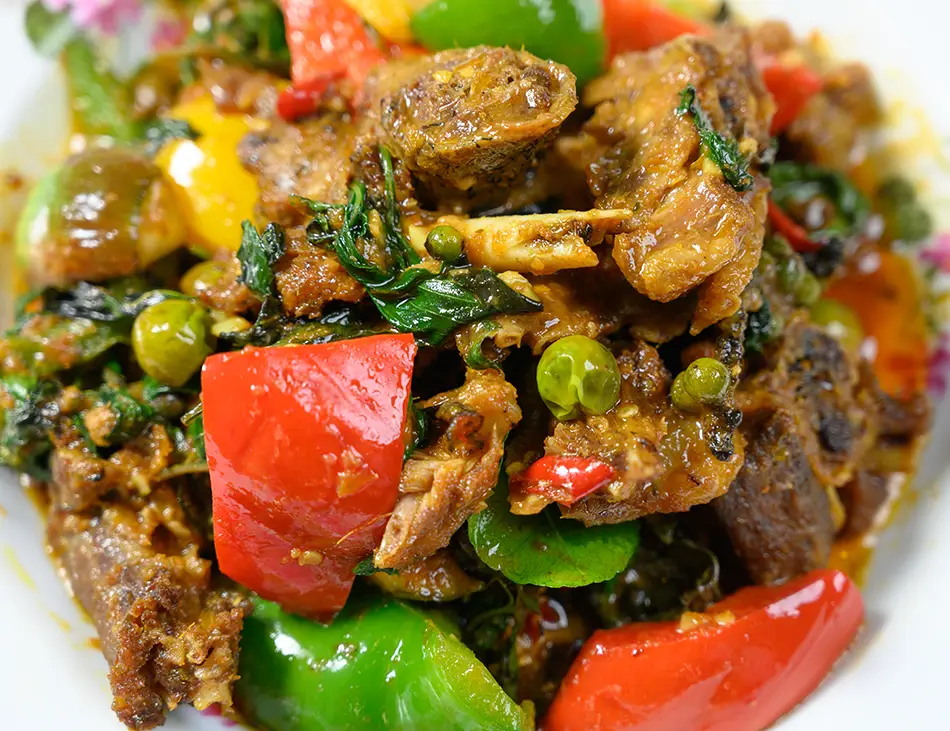
Chaa Kroeung is a vibrant stir-fry that gets its character from kroeung, the foundational yellow, green, or red herb and spice paste of Cambodian cooking. The dish can be prepared with chicken, beef, pork, or fish, which is stir-fried with the aromatic paste and vegetables like long beans and peppers. It has a pronounced lemongrass and galangal flavor profile.
Trey Chean Choun (Fried Whole Fish)
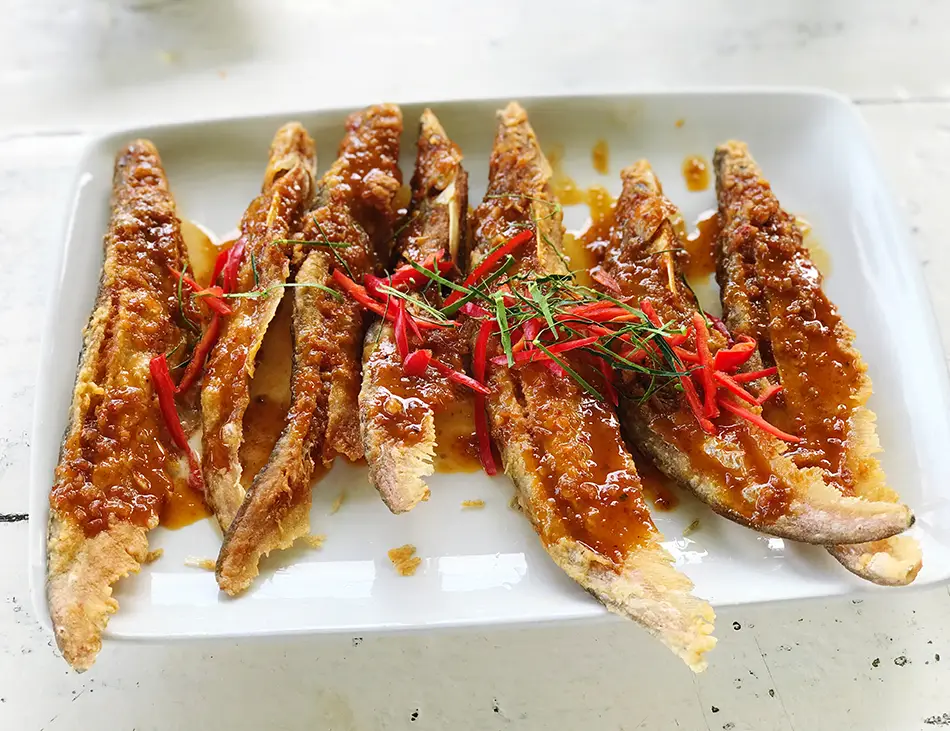
This dish consists of a whole fish, pan-fried until its skin is crisp. It is then topped with a sweet and sour sauce. The sauce is typically made from a base of tamarind, palm sugar, and fish sauce, with added ingredients like fresh ginger, chilies, and sometimes tomatoes and onions, creating a balance of flavors.
Mee Kola (Rice Noodle Salad)
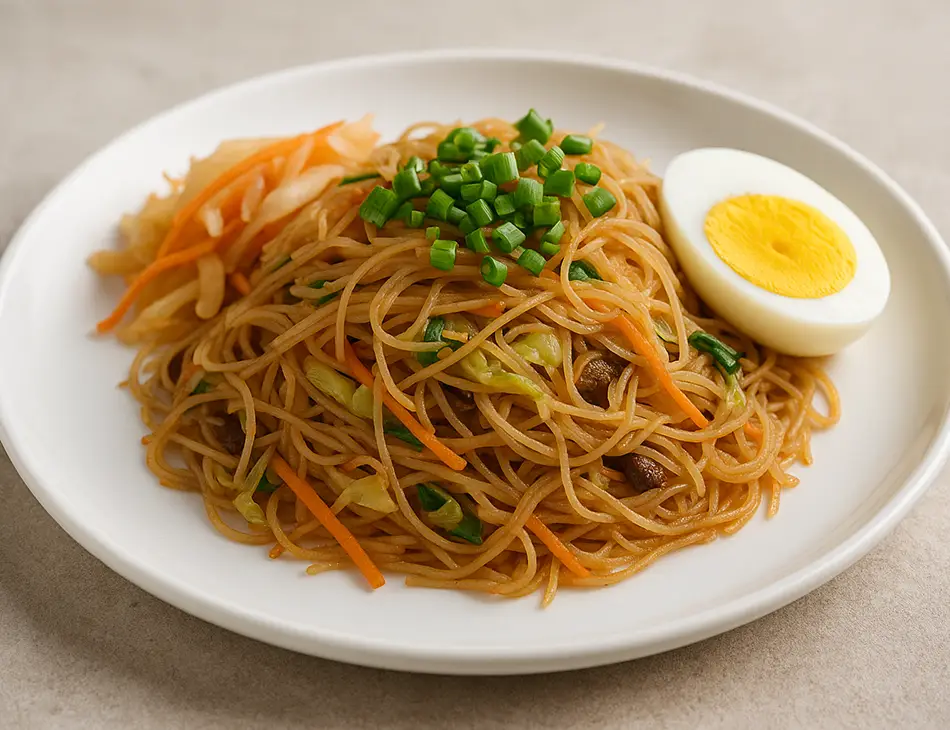
Mee Kola is a vegetarian noodle dish with origins in the Kola ethnic minority of the Pailin province. It consists of thin rice vermicelli noodles, blanched and served at room temperature. The noodles are topped with stir-fried vegetables, crushed peanuts, hard-boiled egg slices, and fresh herbs. A light, soy-based dressing is poured over the top before eating.
Trey Aing (Grilled Freshwater Fish)
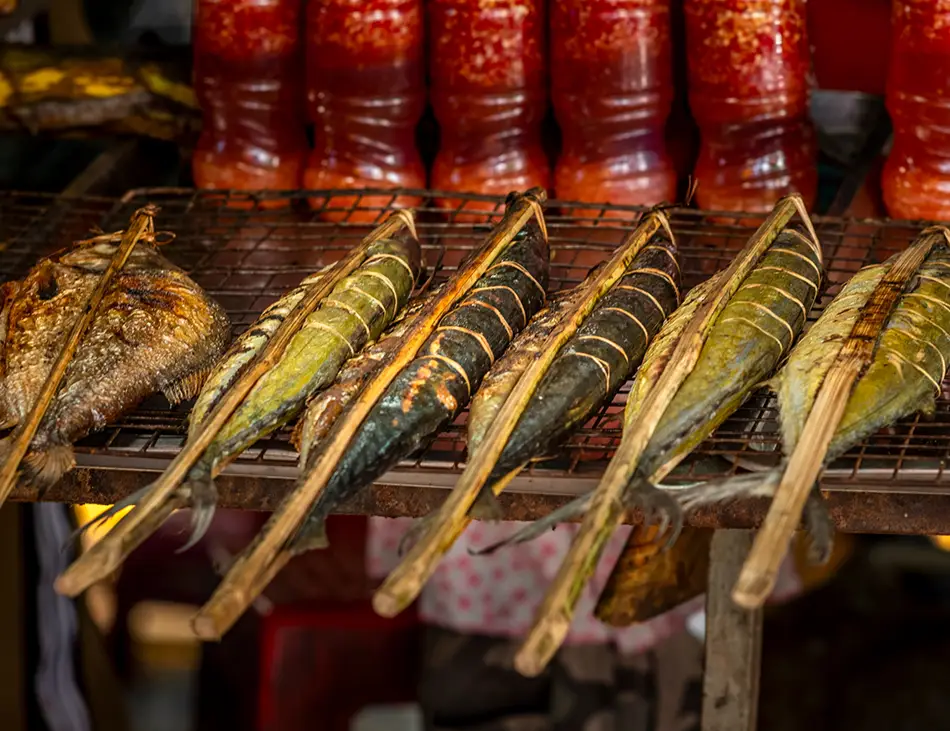
Trey Aing, or “grilled fish,” deserves its spot on any list of the best food in Cambodia. The fish is marinated with salt and chili, stuffed with fragrant lemongrass, and grilled until perfectly smoky. Enjoy it with rice, fresh greens, and dipping sauces.
Cha Trakuon (Stir-Fried Water Spinach)
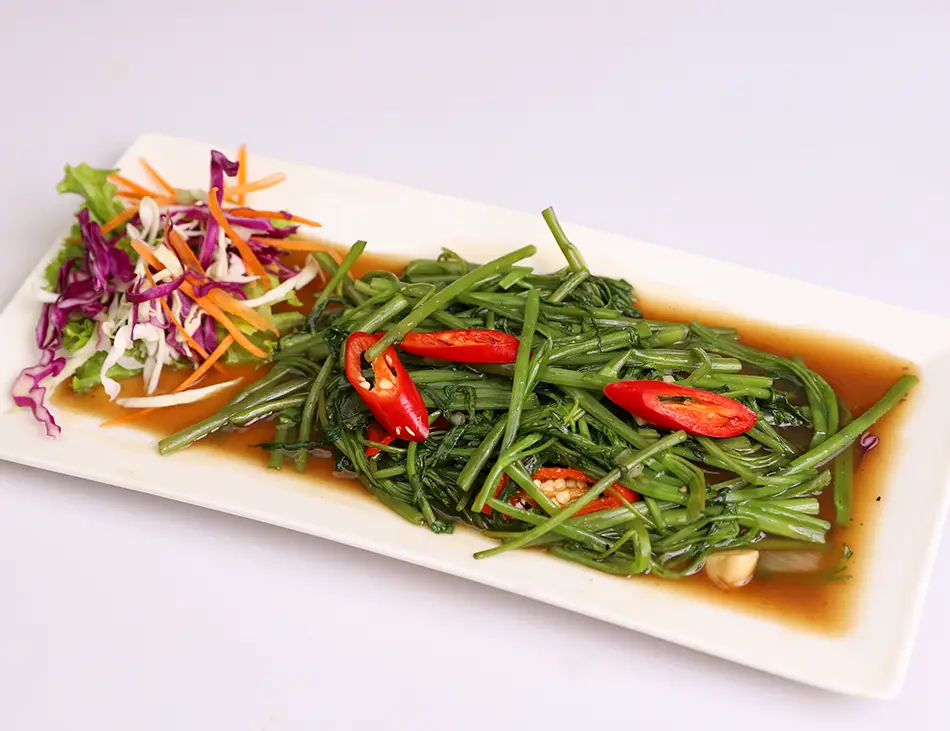
A simple yet common vegetable dish, Cha Trakuon is stir-fried water spinach, also known as morning glory. The hollow stems of the vegetable are quickly cooked in a hot wok with garlic, fermented soybean paste, and often oyster or fish sauce. It is a frequent accompaniment to larger meals.
Soups & Stews to Add to Your Cambodia Food List
Khor Sach Chrouk (Braised Pork And Egg)
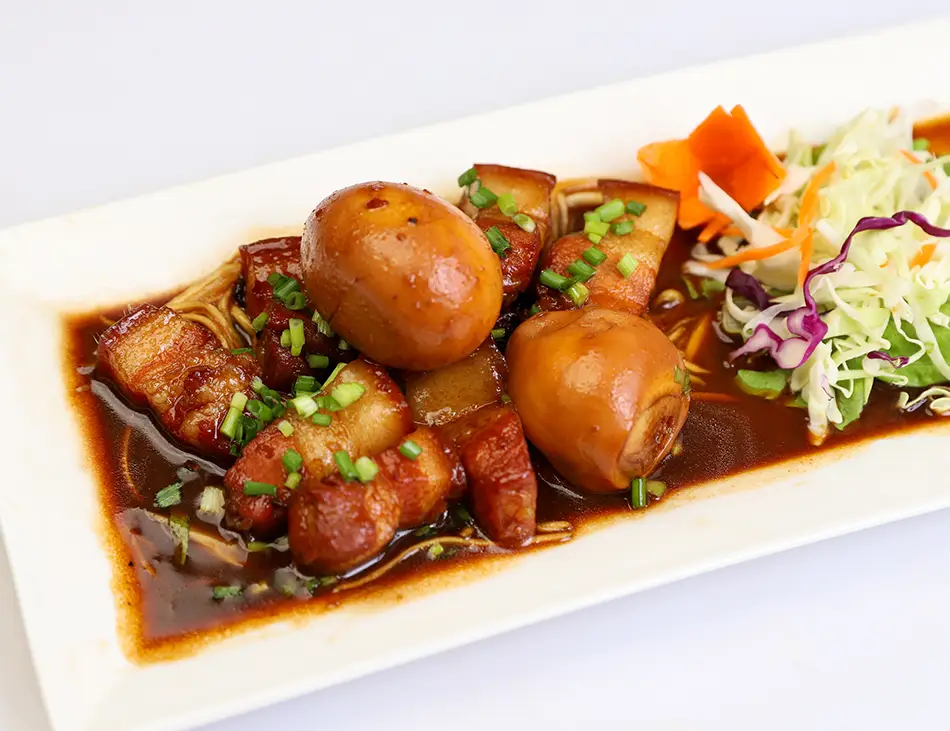
This is a braised pork and egg stew. Chunks of pork belly and hard-boiled eggs are slow-cooked in a dark, savory broth made from caramelized palm sugar, fish sauce, and black pepper. The result is tender meat and eggs that have absorbed the sweet and salty flavors of the broth.
Samlor Kako (Vegetable And Rice Soup)
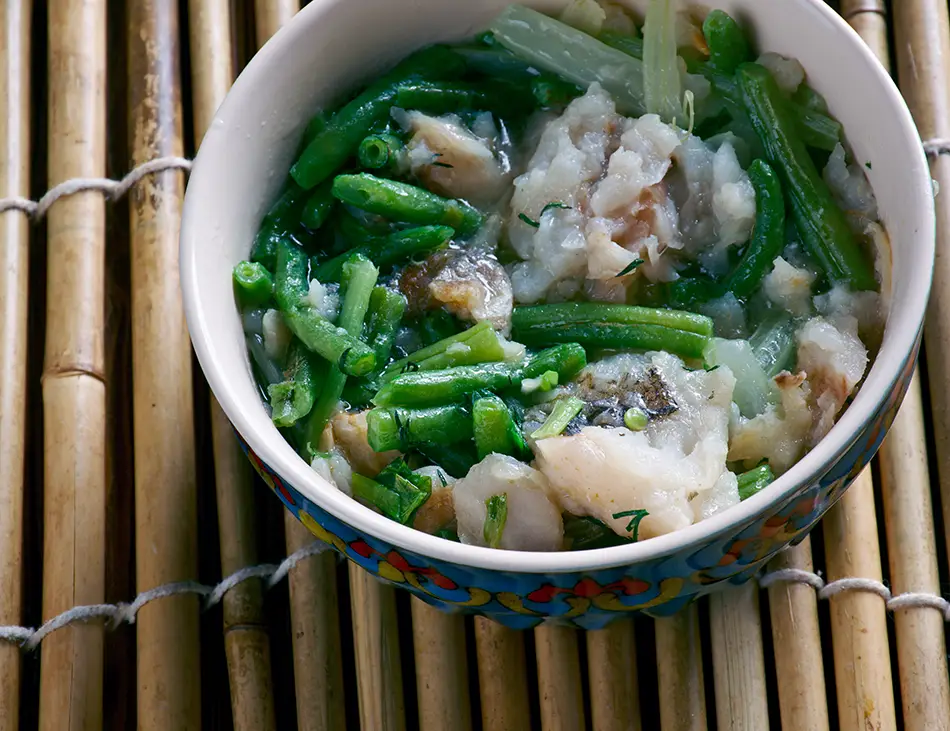
Considered one of Cambodia’s signature dishes, Samlor Kako is a hearty soup or stew made with a mix of vegetables like green papaya, eggplant, and long beans. The broth is thickened with roasted ground rice and flavored with kroeung (a fragrant herb and spice paste) and prahok (a pungent fermented fish paste), giving the dish its distinct savory and aromatic taste
Kuy Teav (Pork Noodle Soup)
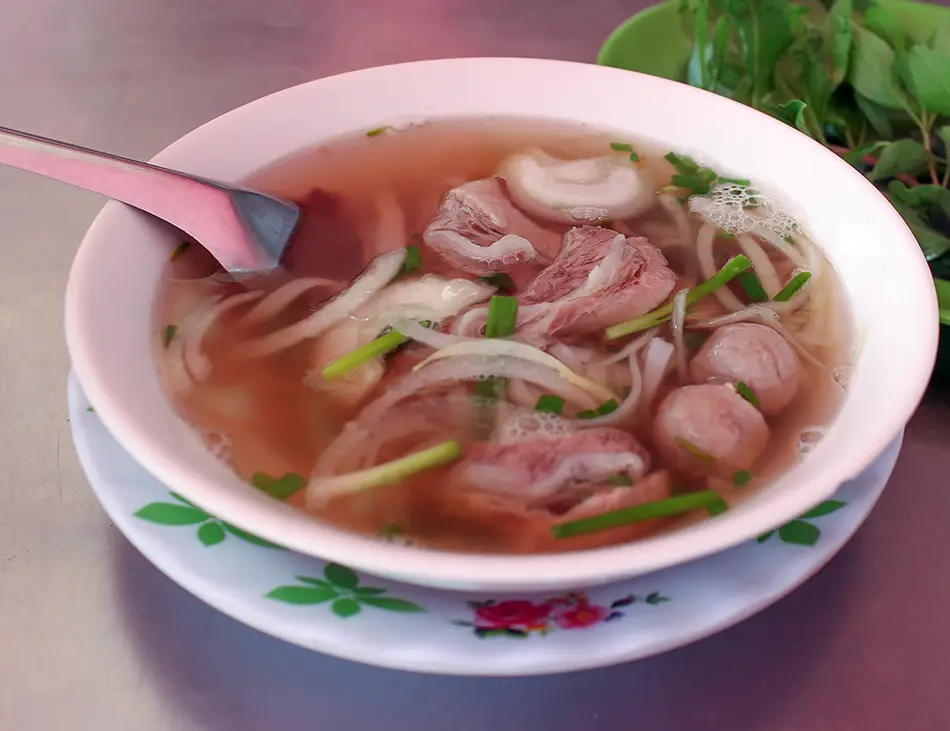
Kuy Teav is a popular noodle soup, most often eaten for breakfast. Its broth is typically clear and made from pork or beef bones. Rice vermicelli noodles are added to the soup along with various toppings, which can include sliced pork, beef balls, shrimp, and offal. It is garnished with fried garlic, scallions, and fresh herbs.
Nom Banh Chok (Rice Noodles With Fish Gravy)

Known as Khmer noodles, Nom Banh Chok consists of fresh, hand-made rice noodles topped with a fish-based gravy. The most common version features a green gravy made from fish, lemongrass, turmeric, and other spices, creating a light curry. It is served with a platter of fresh vegetables and herbs like banana blossom, cucumber, and mint.
Samlor Machu Kreung (Sour Soup With Lemongrass)

This is a classic sour soup. “Samlor Machu” means “sour soup,” and “kreung” refers to the spice paste that provides its primary flavor. The soup’s sourness comes from tamarind, and it includes meat (often beef or chicken), and various vegetables. The kroeung paste gives it a fragrant lemongrass aroma.
Samlor Kari (Coconut Chicken Curry)
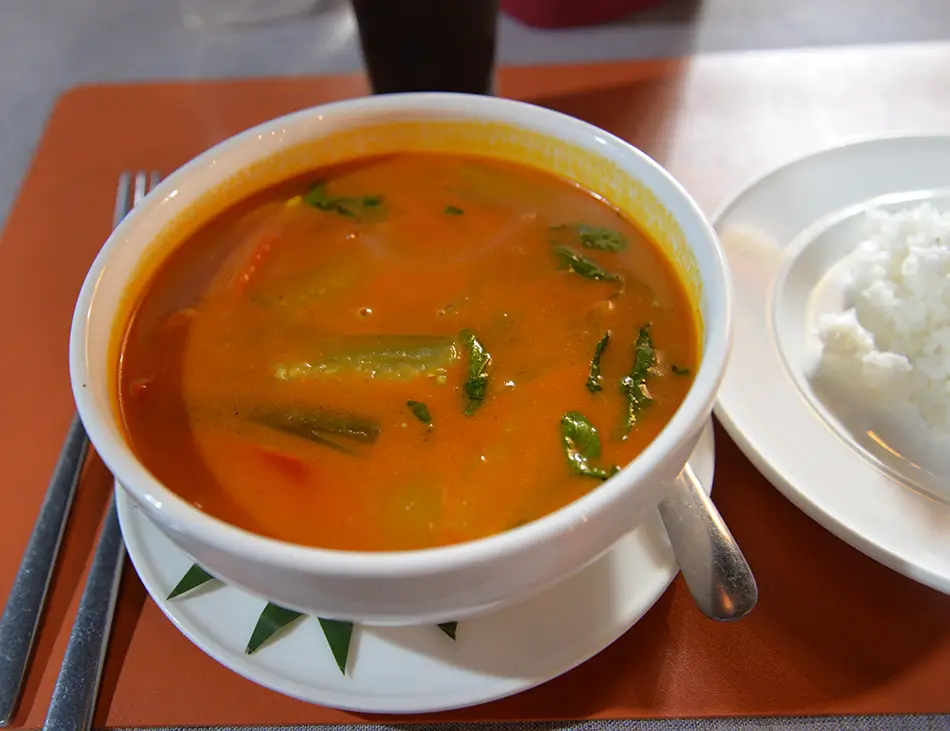
This is the Cambodian version of a red curry. It is generally milder and sweeter than its Thai counterpart, with a less pronounced spicy heat. The curry is made with a coconut milk base and features chicken, sweet potatoes, onions, and carrots. It is typically served with rice or a fresh baguette.
Samlor Prahal (Clear Fish Cake Soup)

Samlar Prahal is a light and brothy soup featuring fish cakes. The fish cakes are made from pounded fish meat seasoned with kroeung. They are cooked in a clear vegetable broth, often with gourds or other green vegetables. It is a subtle dish focused on the texture of the fish cakes and the freshness of the broth.
Yaohon (Khmer Hot Pot)
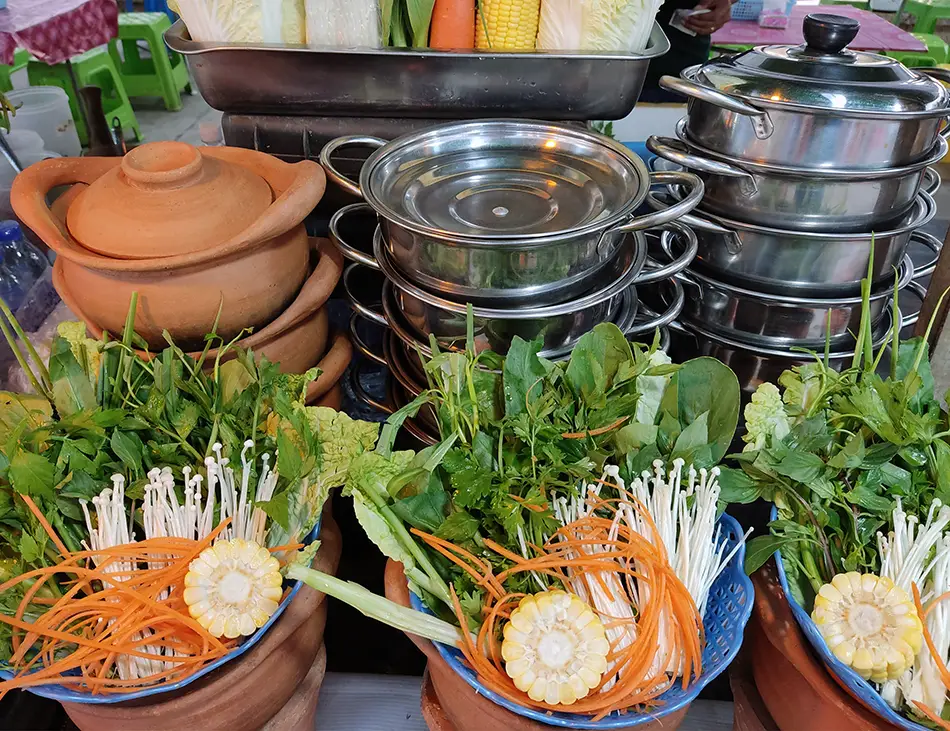
Yaohon is a Cambodian-style hot pot that’s often featured among the best food in Cambodia for groups and festive gatherings. What sets it apart is its broth—a rich, savory blend of coconut milk, chicken stock, and sometimes crushed peanuts. Diners are served a platter of raw ingredients like thinly sliced beef, shrimp, squid, mushrooms, and vegetables to cook at the table in the bubbling pot, making Yaohon both a social experience and a flavorful feast.
Small Plates & Cold Dishes: Must-Try Food in Cambodia
Lap Khmer (Beef Salad)
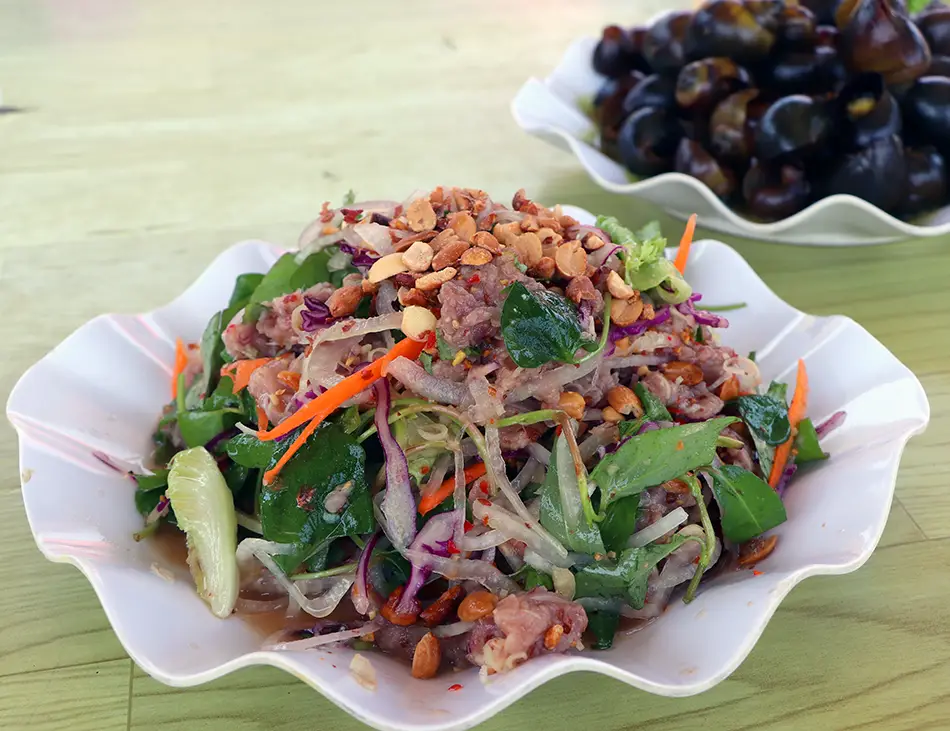
This is a Cambodian-style beef salad. It features thinly sliced beef that is either quickly seared or “cooked” by marinating it in lime juice, similar to a ceviche. The beef is then tossed with shallots, garlic, fish sauce, fresh herbs like mint and basil, and roasted ground rice for texture.
Bok L’hong (Papaya Salad)
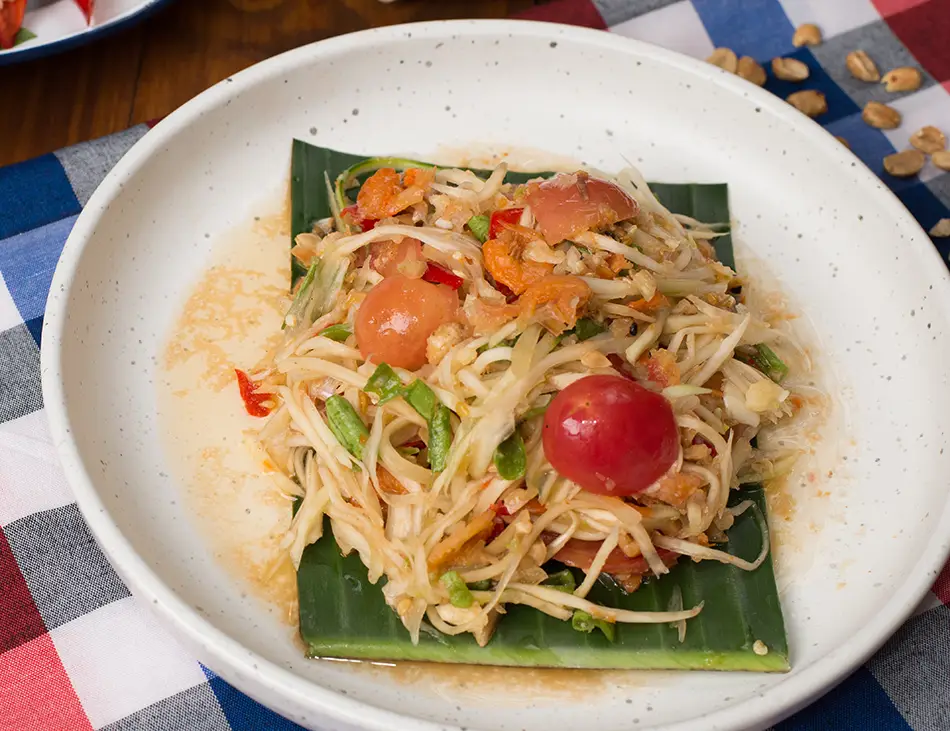
This is the local version of green papaya salad. Unripe papaya is shredded and pounded in a mortar and pestle with ingredients like garlic, chilies, tomatoes, and long beans. The dressing typically includes lime juice, fish sauce, and often prahok (fermented fish paste), which gives it a distinctly pungent and savory flavor profile compared to other regional variations.
Prahok K’tis (Pork And Fish Dip)
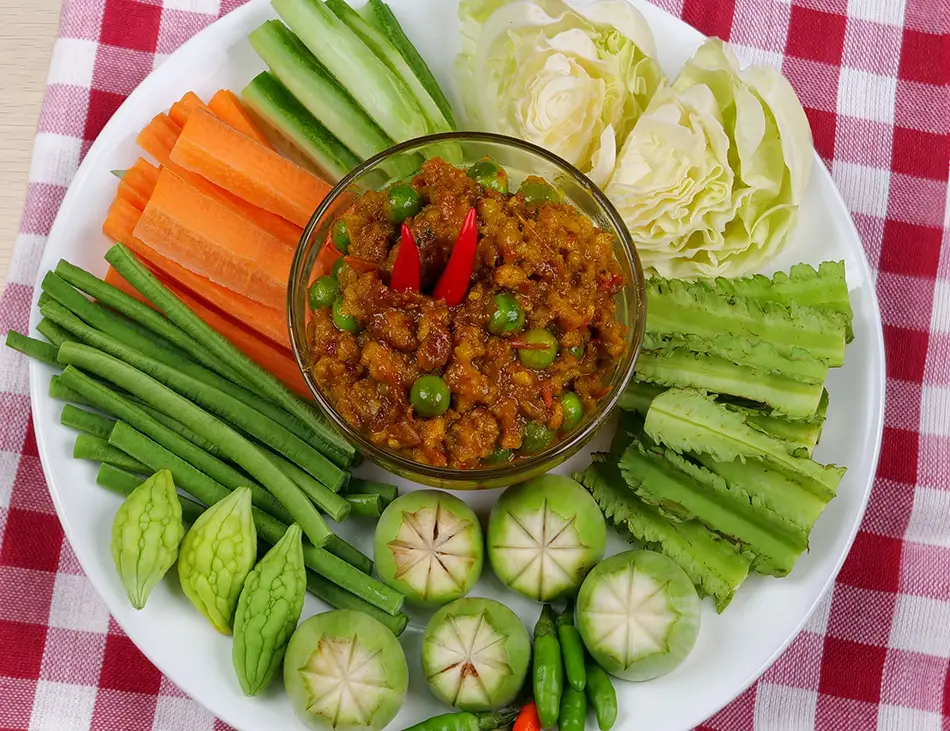
Prahok K’tis is a rich, savory dip that showcases one of Cambodia’s most distinctive ingredients: prahok, a fermented fish paste known for its bold aroma. To make this dip, minced pork is simmered with prahok, coconut milk, and kroeung (herb and spice paste) until the mixture thickens to a creamy consistency. The finished dip is served with an assortment of fresh and blanched vegetables—such as cucumber, eggplant, and cabbage—for scooping and dipping.
Ang Dtray-Meuk (Grilled Squid)
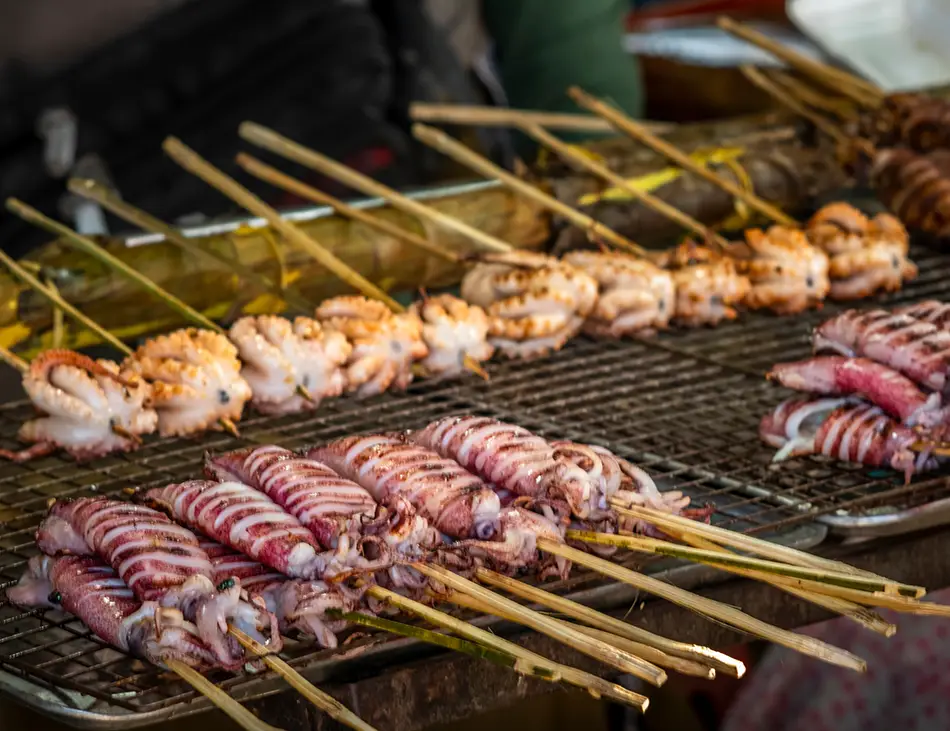
A popular street food, Ang Dtray-Meuk is grilled squid. Whole squid are skewered and grilled over charcoal. They are often brushed with a glaze made from lime juice or fish sauce and sugar. The squid is served with a dipping sauce, typically a tangy mixture with garlic, chilies, and lime.
Nom Ansom Chrouk (Sticky Rice Cake)
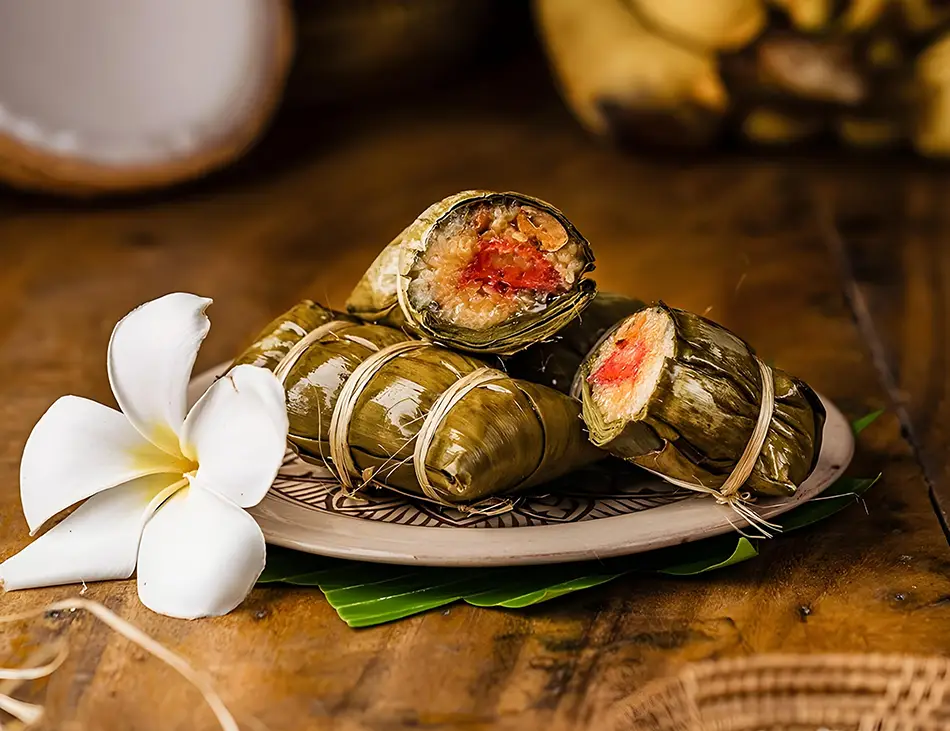
This is a savory sticky rice cake. Glutinous rice is packed around a filling of mung bean paste and fatty pork. The cake is then tightly wrapped in banana leaves and boiled or steamed for several hours. It is a dense and savory snack, especially popular during festivals.
Twa Ko (Fermented Sausage)
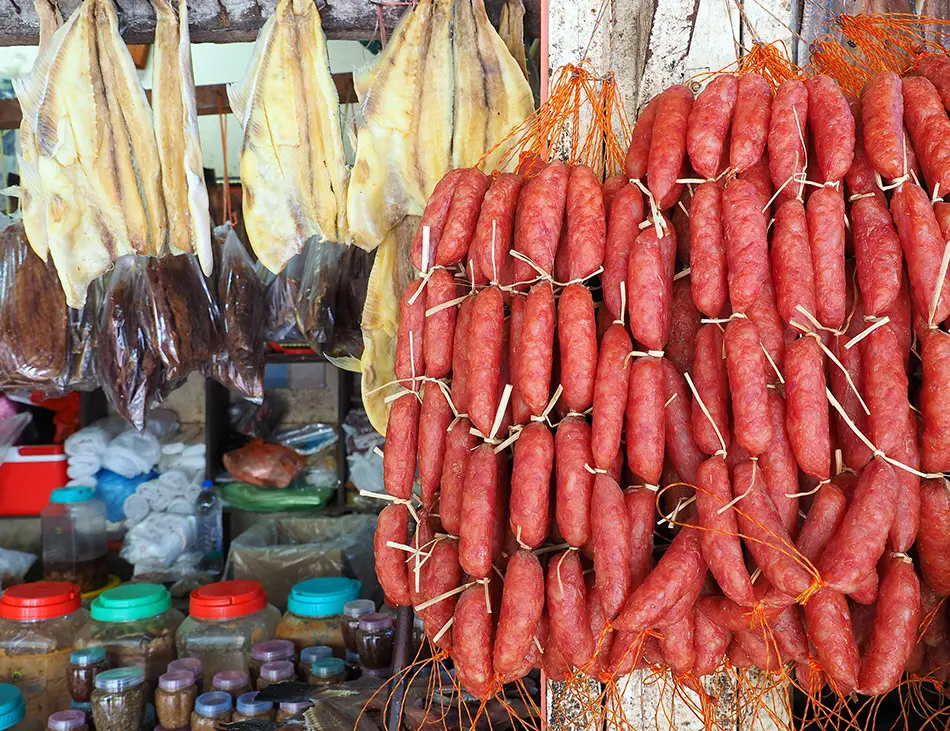
Twa Ko is a type of Cambodian sausage. It can be made from either pork or beef mixed with rice and spices, then fermented. This fermentation process gives the sausage a slightly sour taste. It can be eaten fresh, grilled, or fried.
Tuk Kroeung (Herb Fish Dipping Sauce)

Tuk Kroeung is a classic dipping sauce you’ll often see when exploring the best food in Cambodia. It’s made from pounded fish, garlic, chilies, lime juice, and herbs. The sauce is served with a big plate of fresh or cooked vegetables and sometimes rice for dipping. It’s an important part of many Cambodian meals.
Pong Tia Kon (Fertilized Duck Egg)

Known as a fertilized duck embryo, Pong Tia Kon is a common street food. A developing duck embryo is boiled and eaten in the shell. It is seasoned to taste with salt, pepper, lime juice, and fresh herbs. The texture and components vary depending on the age of the embryo.
Pong Moan Ang (Grilled Eggs)
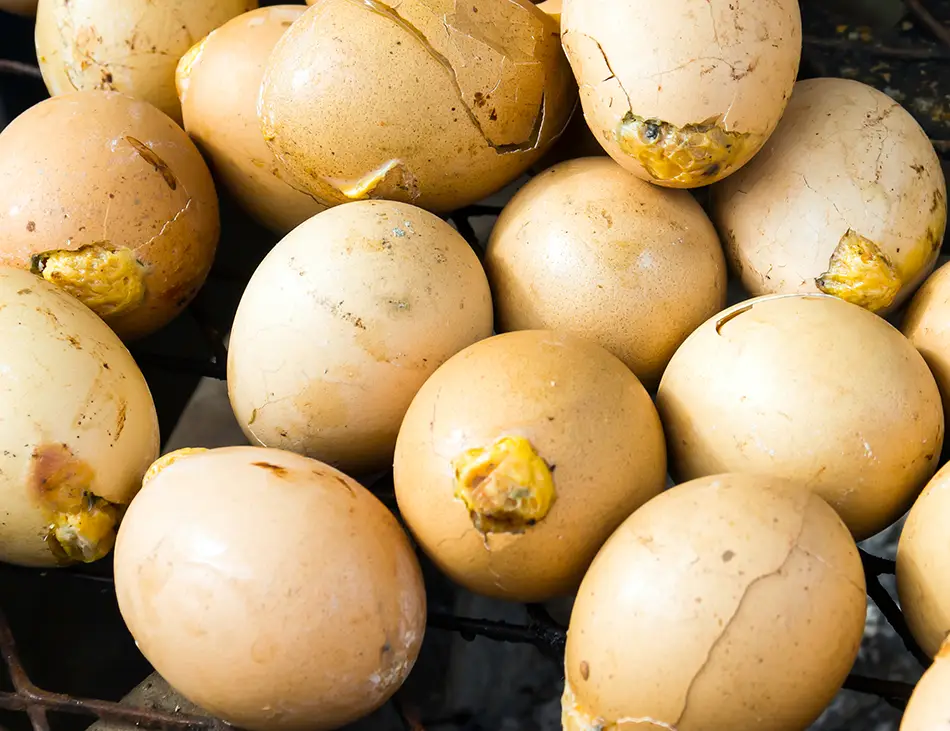
This snack translates to “grilled eggs.” Chicken eggs are carefully emptied through a small hole. The contents are mixed with seasonings like fish sauce and black pepper, then poured back into the shells. The filled eggs are then placed on skewers and grilled over charcoal until cooked.
Bok Trop (Smoked Eggplant Dip)
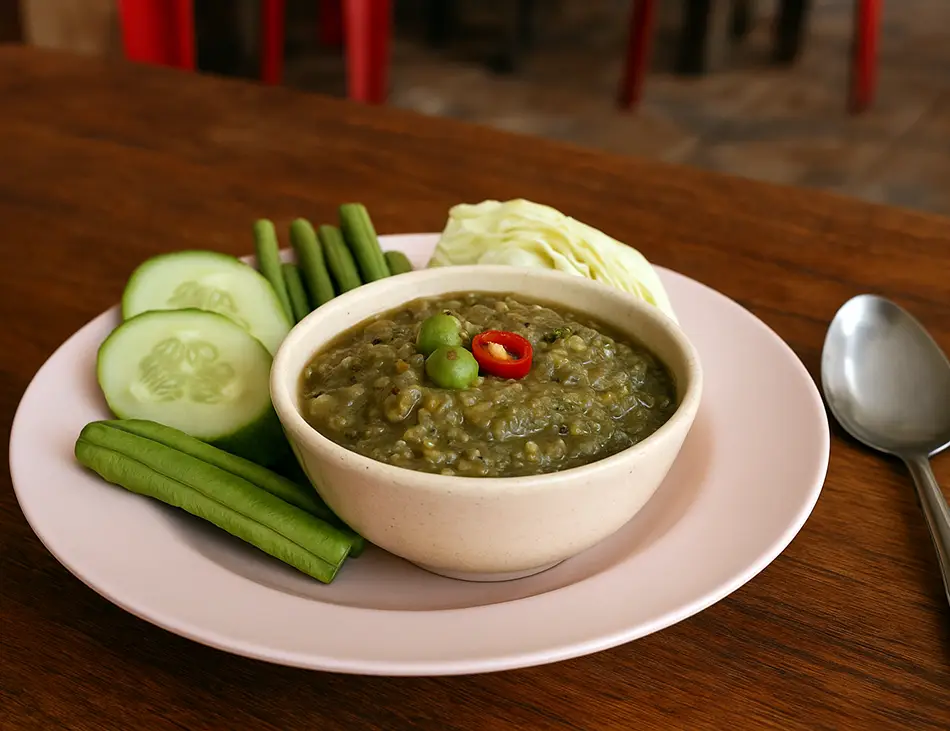
Bok Trop is a smoked eggplant dip. Long Asian eggplants are grilled or roasted over an open flame until the skin is charred and the inside is soft. The flesh is then scraped out and pounded or mashed with garlic, chilies, and sometimes minced pork, creating a smoky and savory dip served with vegetables or rice.
Famous Desserts & Sweets in Cambodia
Kralan (Bamboo Sticky Rice)
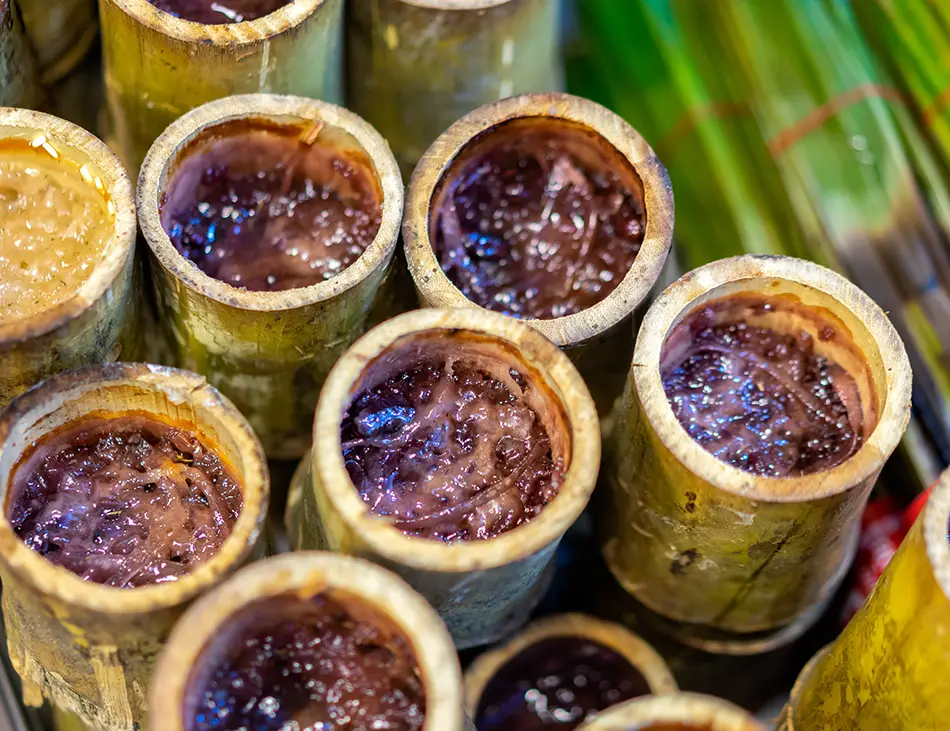
Kralan is a unique dessert made by roasting sticky rice inside a bamboo tube. The rice is mixed with black beans, grated coconut, and coconut milk before being packed into the bamboo. The tube is sealed and roasted over coals, which cooks the rice and infuses it with a subtle bamboo aroma.
Sankhya Lapov (Pumpkin Custard)
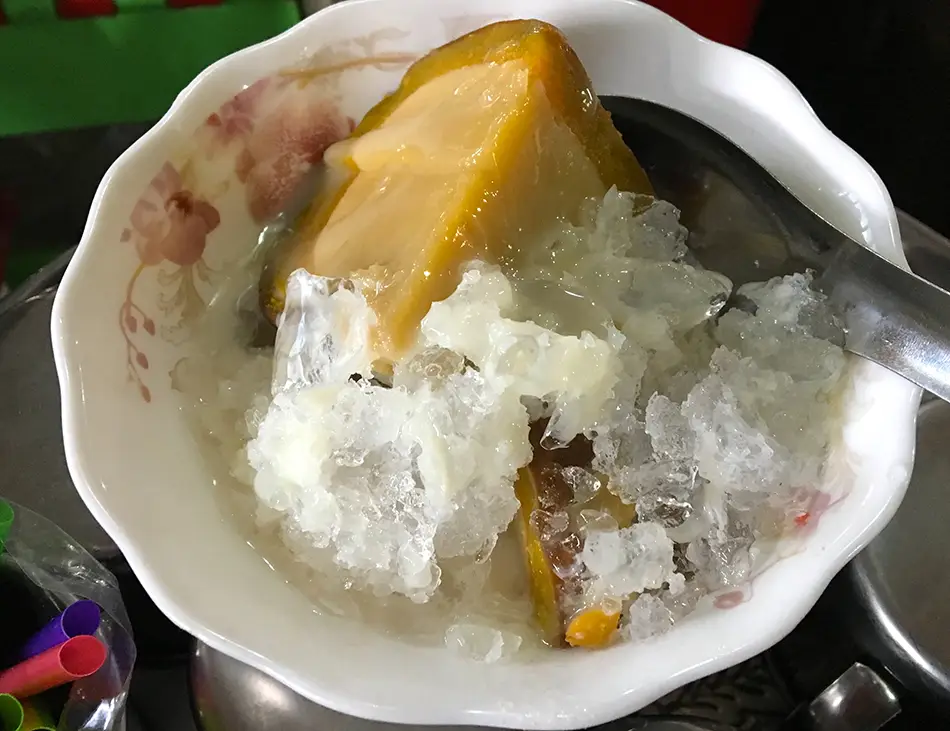
Sankhya Lapov is a beloved pumpkin custard dessert that often appears on lists of the best food in Cambodia. A whole kabocha squash is hollowed out and filled with a sweet custard made from coconut milk, palm sugar, and eggs. The pumpkin is then steamed until the custard sets and the flesh becomes perfectly tender. It’s served in slices, with each piece showing the beautiful contrast between the orange pumpkin and creamy custard.
Cha Houy Teuk (Jelly Dessert)

Cha Houy Teuk is a popular street dessert in Cambodia, perfect for hot days. It is a cold and sweet treat made from different colorful jellies, small tapioca balls, sago, and beans. All the ingredients are put in a bowl, then covered with sweet coconut milk and crushed ice. It’s refreshing, fun, and easy to enjoy.
Num Plae Ai (Sticky Rice Balls)
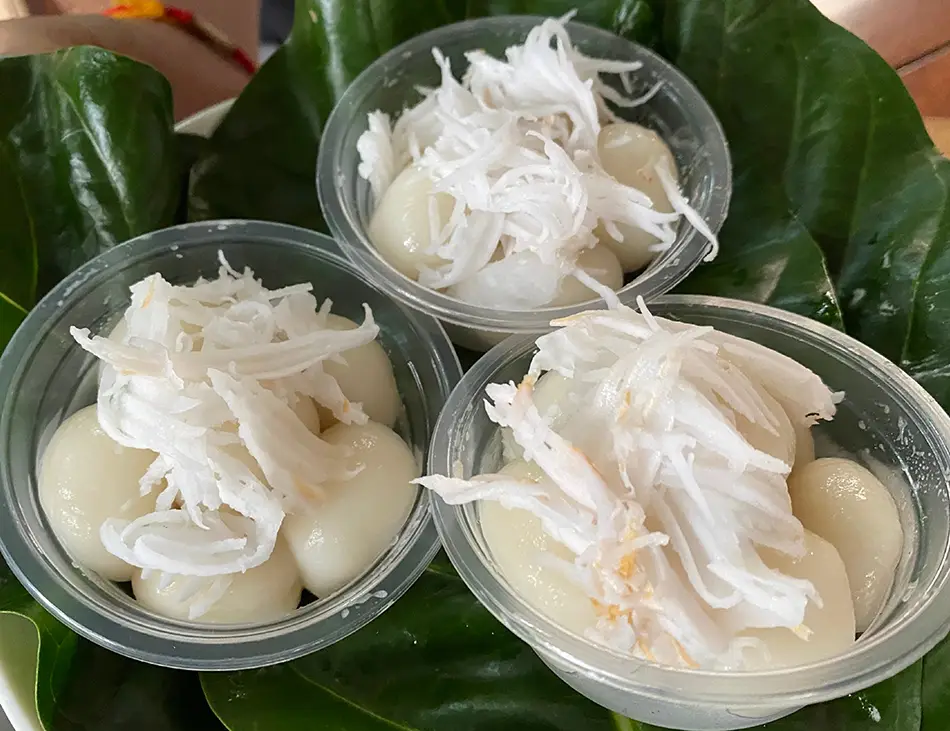
These are small, chewy balls made from glutinous rice flour, similar in texture to Japanese mochi. Each ball has a center of liquid palm sugar that bursts in your mouth when you bite into it. They are boiled, then rolled in fresh, grated coconut before serving.
Chek Chien (Fried Banana)
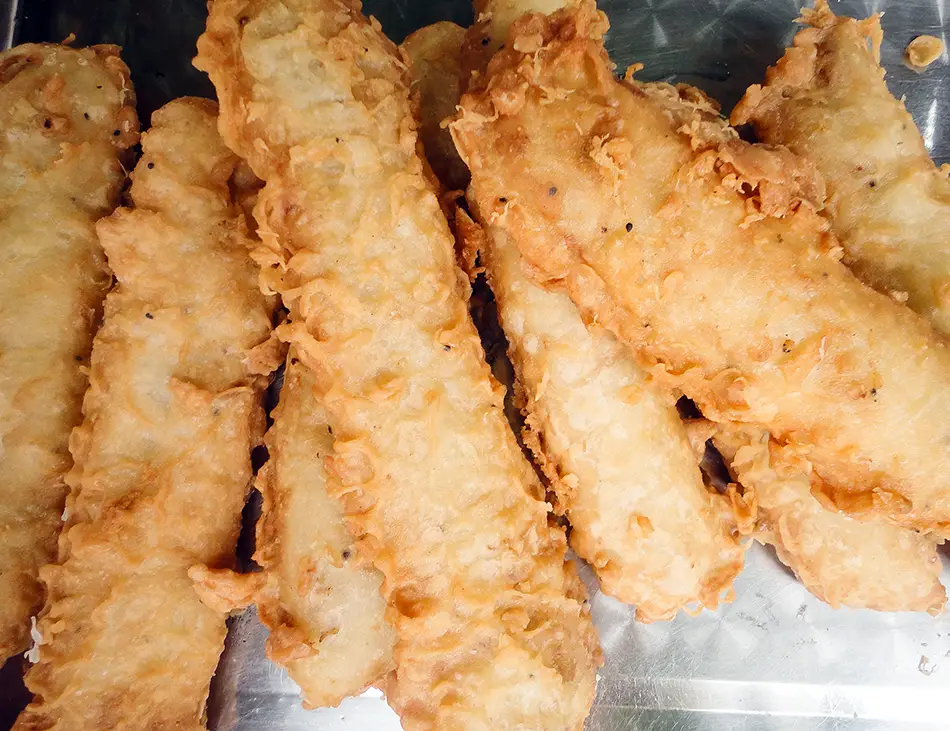
Chek Chien are deep-fried bananas. Slices of ripe banana are dipped into a batter made from rice flour, coconut milk, and sesame seeds. They are then deep-fried until golden and crispy on the outside while remaining soft and sweet on the inside.
Nom Chak Kachan (Layered Jelly Cake)
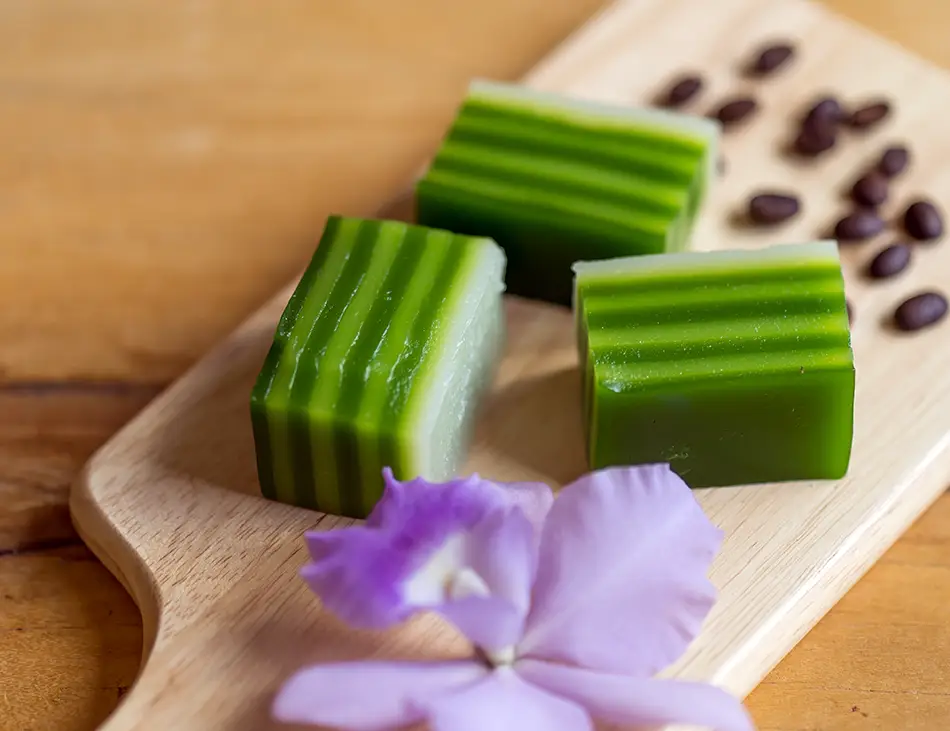
This is a colorful, layered jelly cake. It is made from a batter of rice flour, tapioca starch, and coconut milk, which is steamed in layers. Natural colorings, such as pandan leaf extract for green or butterfly pea flower for blue, are often used. It has a soft, slightly chewy texture.
Authentic Drinks in Cambodia
Teuk Ampov (Sugarcane Juice)
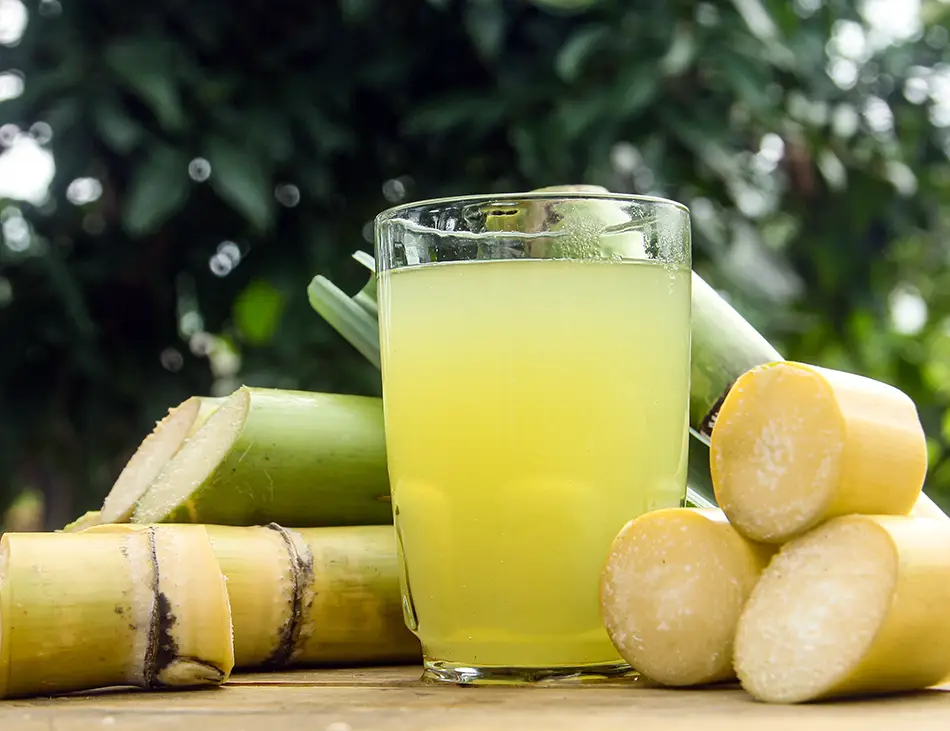
This is fresh sugarcane juice, a widely available street-side refreshment. Stalks of sugarcane are pressed through a machine to extract the sweet juice. It is typically served over ice, often with a small squeeze of lime or calamansi to add a tart counterpoint to the sweetness.
Sra Peang (Fermented Rice Wine)
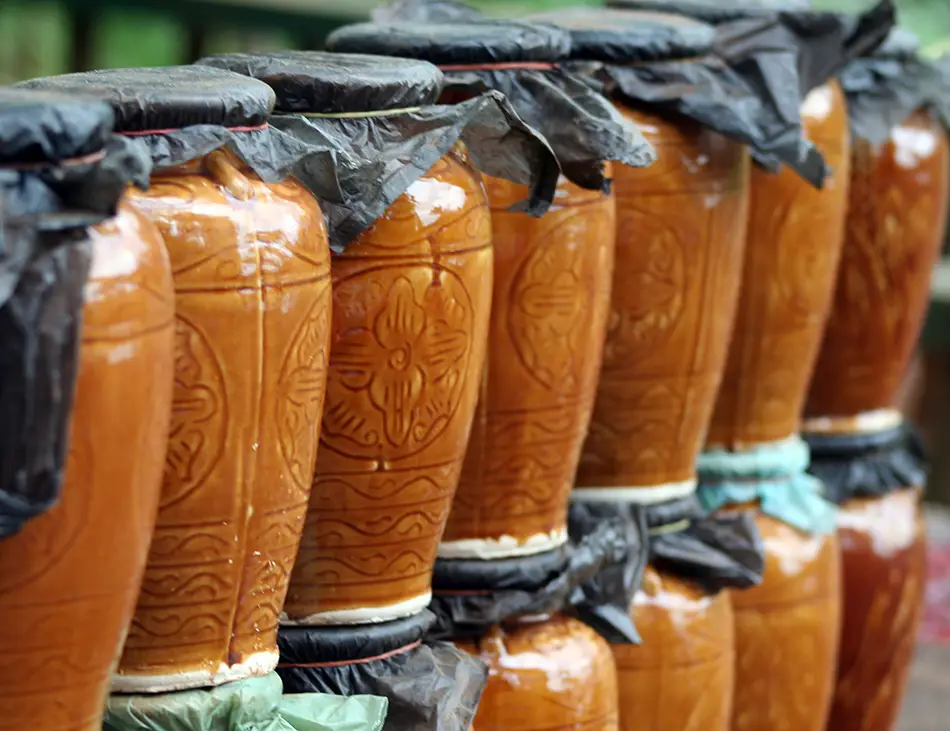
Sra Peang refers to rice wine that is fermented and stored in clay jars. This traditional alcoholic beverage is a communal drink, often consumed through long bamboo straws directly from the jar during social gatherings and ceremonies in rural areas.
Keep Track of the Best Food in Cambodia During Your Trip
You now have a practical list of the best food in Cambodia, featuring the most essential dishes to try on your travels. Use this list as your starting point for navigating menus and street stalls, so you can experience the core flavors of Cambodia’s unique culinary landscape.
To make your food journey even more organized and memorable, we encourage you to download our interactive Cambodia Food PDF checklist. Use it to mark off each dish as you try it and jot down your own notes and ratings.
We hope this list inspires you to explore with an open mind and an adventurous palate. Happy travels—and even happier eating!




